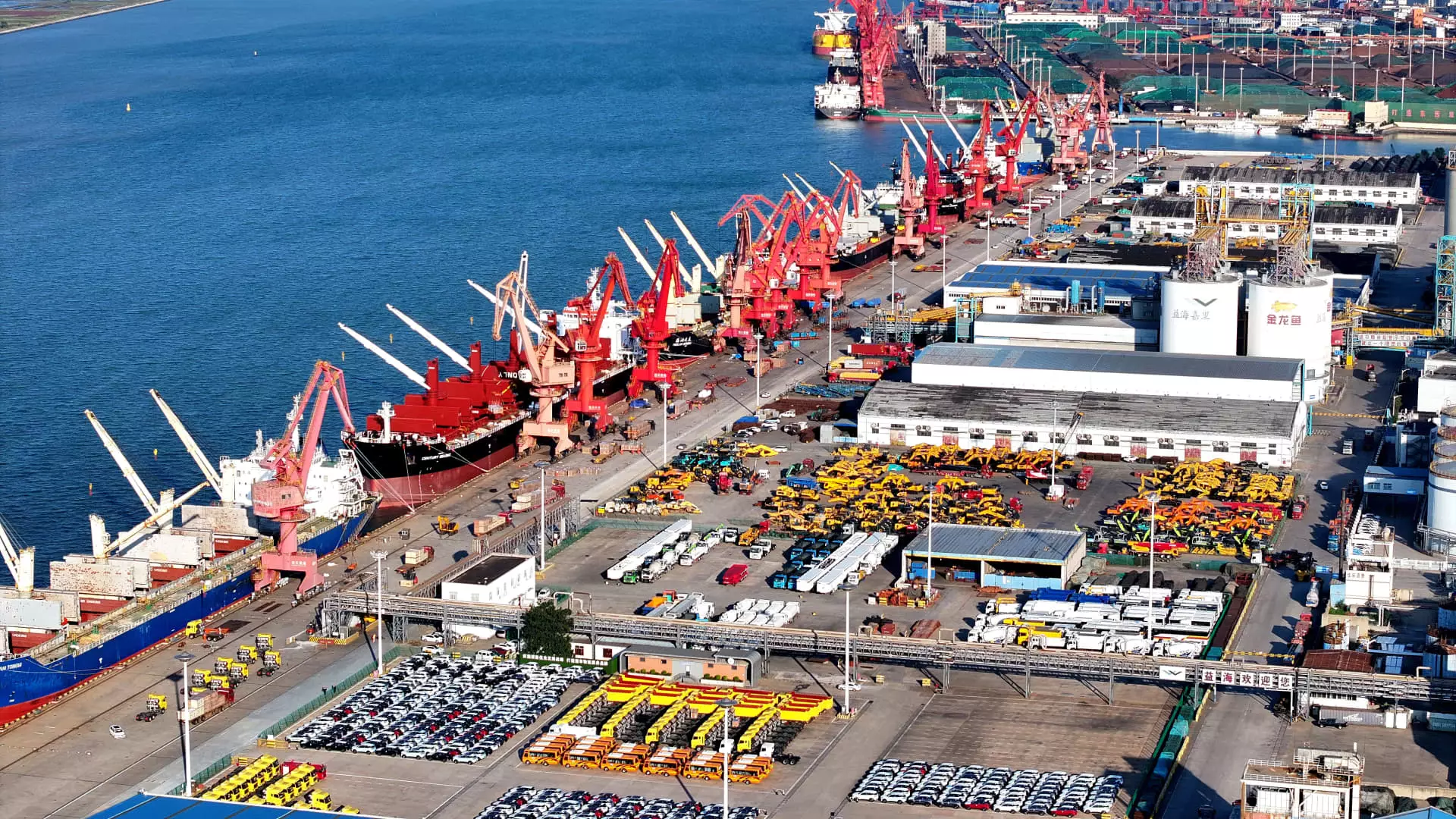In a disheartening trend for China’s economy, industrial profits have fallen by 10% in October compared to the previous year, marking the third consecutive month of decline. This drop follows a staggering 27.1% decrease in September, which represents the most significant downturn since March 2020. Such a continuous slide in corporate earnings is alarming and raises questions about the effectiveness of Beijing’s stimulus measures, which were introduced to bolster economic activity. The National Bureau of Statistics reported that for the first ten months of the year, industrial profits decreased by 4.3%, a slight worsening from the 3.5% decline recorded through September.
The importance of industrial profits cannot be overstated as they serve as a barometer for the financial health of critical sectors such as manufacturing, mining, and utilities in China. The ongoing declines in these figures suggest systemic issues within the economy that stimulus efforts have yet to rectify.
Despite the bleak figures, there is a glimmer of hope. The National Bureau of Statistics attributed the smaller decline in October to the impact of government stimulus measures. Yu Weining, a statistician with the NBS, highlighted that “most industries showed improved profitability from the previous month, particularly in the equipment and high-tech manufacturing sectors.” This observation indicates that while overall profits are dwindling, certain areas of the economy may be stabilizing.
However, experts like Eugene Hsiao from Macquarie Capital emphasize that while improvements are noted, they are occurring at a low base. The anticipated recovery appears to be a result of a temporary boost in demand rather than a sustainable economic revival. Hsiao’s comments about local exporters rushing shipments to the United States before pending tariffs further imply that these conditions may not last.
The Disparity in Profit Trends Among Different Firms
A closer examination of the types of businesses affected reveals clear disparities. State-owned enterprises experienced an 8.2% decline in profits during the January to October period, while private firms faced a smaller drop of 1.3%. Interestingly, foreign industrial companies with investments from regions like Hong Kong, Macao, and Taiwan recorded a marginal profit increase of 0.9%. This suggests that foreign firms are either more resilient in adapting to the economic environment or benefiting from niche opportunities that are not accessible to domestic firms.
Such divides in profitability could lead to long-term shifts in the industrial landscape, potentially affecting investment strategies and employment patterns. If Beijing’s stimulus measures are focusing primarily on state-owned firms, there could be significant implications for the private sector’s operational viability moving forward.
Broader Economic Indicators Reflect Slow Growth
Recent economic data provide a mixed picture. Though industrial profits are in decline, there are indications of slight progress in consumer behavior. October retail sales, for instance, exceeded expectations with a 4.8% year-on-year growth. Furthermore, the unemployment rate dipped to 5%, down from 5.1% in September, suggesting a slight recovery in the job market. Yet, these positive indicators are overshadowed by deeper issues in manufacturing and real estate.
While some sectors are witnessing marginal growth, deflationary pressures remain a significant concern. The consumer price index in October reflected a slow pace, rising just 0.3% year-on-year, the weakest growth in several months, while the producer price index saw a 2.9% fall, indicative of deeper deflationary trends. Real estate investments plummeted by 10.3% year-on-year, illustrating the significant challenges within this critical sector.
As the world’s second-largest economy grapples with an economic slowdown, fueled by waning domestic consumption and a sluggish housing market, the Chinese government is anticipated to implement further fiscal policies to stimulate growth. The imminent release of the manufacturing purchasing managers’ index (PMI) for November is expected to offer insights into whether these measures are effective. Economists predict a PMI reading of 50.3, suggesting tentative expansion but still close to stagnation.
While there are flickers of potential recovery amid the challenges faced by China’s industrial sector, the path ahead is fraught with uncertainty. The government’s ability to balance intervention with market dynamics will determine both corporate recovery and overall economic stability in the face of ongoing global pressures.


Leave a Reply